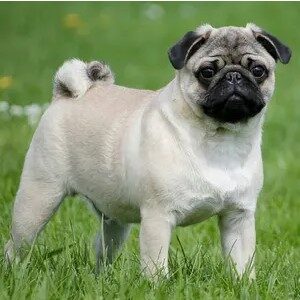Pug Dog Beds
Pugs Need an Orthopedic Bed!
Introduction
Pug dog beds take into account their sleeping style, health conditions, and preferences. Because of their health issues, an orthopedic bed is the best choice. Pugs are one of the most beloved and recognizable dog breeds, known for their wrinkled faces, curly tails, and big, expressive eyes.
Originating in China and bred as companion animals for royalty, Pugs have captured the hearts of dog lovers worldwide for centuries. Their small size, affectionate personalities, and charming demeanor make them ideal pets for individuals and families alike.
Pugs are notorious for their laid-back temperament and love of lounging, but they also have bursts of energy, enjoying playtime and short walks. Despite their many appealing traits, Pugs require special attention and care.
Their unique physical features, such as their flat faces and compact bodies, can lead to certain health concerns that owners must manage. From breathing difficulties to joint issues, Pugs may need more frequent vet visits compared to other breeds.
However, with the right care, they can live long, happy lives filled with love and companionship.
For prospective or new Pug owners, understanding their needs—both physical and emotional—is key to ensuring they thrive. From selecting the right dog bed and feeding them safe, nutritious foods to managing common behaviors like separation anxiety and clinginess, responsible ownership is essential.
Whether you’re a first-time pet owner or a seasoned dog lover, bringing a Pug into your home is a rewarding experience that comes with its own set of responsibilities.
In this guide, we share information about pugs that new owners may not know about. Included are the best dog beds, best brands, facts, fun facts, health issues, behavior concerns, tips for new owners, costs of ownership, and safe foods and foods to avoid.
Best Dog Bed Types
Here’s a list of the best dog bed types and some of the top brands that new dog owners may want to check out:
Best Dog Bed Types for Pugs
- Orthopedic Beds: These beds provide extra support for the joints and spine, ideal for Pugs, especially as they age and may develop joint issues.
If you are going to purchase an orthopedic memory foam bed, be sure to look for the CertiPUR-US seal. The seal means that the materials used do not contain any chemicals or toxins that are harmful to humans and pets.
- Donut or Bolster Beds: These beds have raised edges, allowing Pugs to rest their heads comfortably, providing them with a sense of security.
- Memory Foam Beds: These are great for cushioning Pugs’ bodies, relieving pressure points, and helping with joint pain.
- Cooling Beds: Pugs are prone to overheating due to their short snouts, so a cooling bed can help regulate their body temperature.
- Cave or Covered Beds: Since Pugs enjoy snuggling in enclosed spaces, cave beds provide them with a cozy and safe spot to retreat.
- Washable Beds: Beds with removable, washable covers are practical for Pug owners, as Pugs can shed quite a bit.
- Flat or Low-Profile Beds: Given their short stature, Pugs may prefer low-profile beds that are easy to get in and out of.
- Waterproof Beds: Great for older Pugs who might experience incontinence, as they’re easy to clean.
- Elevated Beds: For warmer climates, elevated beds can keep Pugs cooler by allowing air to circulate underneath.
- Travel Beds: Lightweight and portable beds that can be packed for travel or used on the go.
Best Dog Bed Brands for Pugs
- PetFusion – Known for its high-quality orthopedic memory foam beds, providing excellent support for dogs with joint issues.
- Furhaven – Offers a variety of bed styles, including orthopedic and cooling options, with affordable pricing.
- BarksBar – Provides stylish orthopedic beds that come with extra padding and non-slip bases for comfort and safety.
- K&H Pet Products – Specializes in elevated and cooling beds, perfect for helping Pugs stay cool in warmer environments.
- Brindle – Features memory foam beds that offer great support while being lightweight and easy to move around.
- Majestic Pet – Known for durable, washable beds that come in a variety of sizes and designs.
- Best Friends by Sheri – Famous for their cozy donut beds that provide warmth and comfort, ideal for snuggling Pugs.
- Casper – Offers durable, high-quality memory foam beds designed for both comfort and support.
- The Dog’s Bed – Known for their orthopedic beds with memory foam designed specifically for dogs with joint problems.
- Blueberry Pet – Offers stylish and comfortable beds that are also easy to clean and maintain, perfect for busy pet owners.
These bed types and brands cater to the specific needs of Pugs and other small breeds, focusing on comfort, joint support, and temperature regulation.
Video: Things You Must Not Do
The video shares things you must not do with your pug.
Facts and Fun Facts About Pugs
Below are some facts and fun facts about Pugs you may not know.
Measurements
- Breed Type: Toy
- Height Male: 10 – 13 inches
- Height Female: 12 inches
- Weight Male: 14 – 18 lbs.
- Weight Female: 13 – 15 lbs.
- Length Male:5 – 20.5 inches
- Length Female: 10 – 12 inches
- Lifespan: 13 – 15 years
- Fully Grown: 9 – 12 months
- Colors: Black, Fawn
- Popularity: This breed is the 36th most popular in the United States according to the American Kennel Club in 2023.
- Intelligence: This breed is ranked as the 57th most intelligent according to Professor Stanley Coren at the University of British Columbia.
Facts and Fun Facts
Here are some facts and fun facts about Pugs you may not be aware of:
Facts About Pugs
- Origin: Pugs originated in China over 2,000 years ago, where they were bred as companion dogs for Chinese royalty.
- They Aren’t Related to Bulldogs: Pugs are sometimes called “Dutch Bulldogs,” but this is a bit of a misnomer. DNA testing has proven that Bulldogs and Pugs aren’t actually related. The Pug does have the same stocky shape, flat face, and wrinkles as the Bulldog, but Pugs share their origins with the Pekingese, not the Bulldog.
- Their Face Wrinkles Are a Badge Of Honor: Pugs have wrinkled faces because Chinese breeders purposely bred them that way. They actually aimed to create a pattern of wrinkles on the dogs’ foreheads, which resembled the Chinese character for “prince.”
- Breed Group: Pugs are part of the toy group and are small in size, typically weighing between 14-18 pounds.
- Buddhist Monks Kept Them as Pets: The earliest records of the Pug come from China, where Pugs were pets in Tibetan Buddhist monasteries. We know that Pugs have existed since at least 400 B.C., making them one of the oldest dog breeds.
- Temperament: They are known for their affectionate and playful nature, making them excellent companions.
- Distinct Appearance: Pugs are recognized by their wrinkled faces, short snouts, and large, round eyes.
- Short Coat: Pugs have a short, smooth coat that sheds moderately year-round and heavily during shedding season.
- Breathing Issues: Due to their brachycephalic (flat-faced) structure, Pugs can experience respiratory issues, particularly in hot weather.
- Exercise Needs: They require moderate exercise to stay healthy but are prone to overheating during rigorous activities.
- Social Dogs: Pugs thrive on human attention and don’t like being left alone for extended periods.
- Vocalization: Though they are not heavy barkers, Pugs are known to grunt, snort, and make a variety of noises due to their short snouts.
Fun Facts About Pugs
- Royal Companions: In ancient China, Pugs were pampered by emperors, and sometimes given their own guards.
- Nap Lovers: Pugs are known for their love of sleep and can nap up to 14 hours a day.
- Wrinkles with Meaning: In ancient China, the wrinkles on a Pug’s forehead were said to resemble symbols of good fortune.
- Mascot of the Dutch: Pugs were a symbol of the Dutch royal family, especially after one saved Prince William of Orange from an assassination attempt.
- Unique Sounds: Pugs are known to “reverse sneeze,” which sounds like snorting and is often mistaken for choking.
- Napoleon’s Fear: Napoleon Bonaparte’s wife, Josephine, had a Pug named Fortune, who once bit Napoleon on their wedding night.
- Movie Stars: Pugs have appeared in popular films like Men in Black and The Adventures of Milo and Otis.
- They Come in Three Colors: Pugs are primarily fawn or black, but a rarer apricot-colored variety also exists.
- Pug’s Latin Motto: The official motto of the breed is “Multum in Parvo,” which means “a lot in a little” – fitting for their big personality in a small body.
- Party Animals: Pugs are known for their sociable, outgoing nature, often becoming the center of attention at any gathering.
Health Issues
Here’s a list of the most common health conditions in Pugs:
1. Brachycephalic Airway Syndrome:
- Due to their flat faces, Pugs are prone to breathing difficulties, which can cause snoring, snorting, and in more severe cases, respiratory distress, especially in hot or humid weather.
2. Hip Dysplasia:
- Pugs can be affected by this condition, where the hip joint doesn’t fit properly, causing pain, inflammation, and mobility issues over time.
3. Patellar Luxation:
- This is a common condition in smaller dogs like Pugs where the kneecap dislocates from its normal position, leading to limping and discomfort.
4. Obesity:
- Pugs are prone to weight gain due to their love of food and relatively low energy levels. Obesity can exacerbate other health problems such as breathing difficulties and joint issues.
5. Eye Conditions:
- Corneal Ulcers: Pugs’ prominent eyes are prone to injury, which can lead to corneal ulcers.
- Dry Eye (Keratoconjunctivitis Sicca): This occurs when their eyes don’t produce enough tears, leading to dryness and irritation.
- Entropion: A condition where the eyelid rolls inward, causing irritation to the eye.
6. Pug Dog Encephalitis (PDE):
- This is a rare but fatal inflammatory brain disease unique to Pugs. It causes seizures, lethargy, and eventually leads to death. Unfortunately, there’s no cure for PDE.
7. Skin Fold Dermatitis:
- The wrinkles on a Pug’s face can trap moisture and dirt, leading to infections and irritation. Regular cleaning of their skin folds is necessary to prevent this.
8. Allergies:
- Pugs are prone to allergies, both food and environmental. Symptoms may include itching, sneezing, or skin infections.
9. Heart Conditions:
- Mitral Valve Disease: A condition where the valve in the heart deteriorates, leading to heart failure over time.
- Aortic Stenosis: Narrowing of the aorta can cause issues with blood flow from the heart.
10. Intervertebral Disc Disease (IVDD):
- Pugs are susceptible to IVDD, where the discs in the spine degenerate or rupture, causing pain, mobility issues, and in severe cases, paralysis.
By monitoring these conditions and ensuring regular vet check-ups, Pug owners can manage or prevent many of these health issues from becoming severe.
Behavior Concerns
Here’s a list of common behaviors that new Pug owners should be aware of:
1. Affectionate and Clingy:
- Pugs are incredibly loving and form strong bonds with their owners. They thrive on human interaction and can be very clingy, often following their owners around the house.
2. Stubborn Streak:
- While generally good-natured, Pugs can be a bit stubborn when it comes to training. They may test their owners’ patience, requiring positive reinforcement and consistent training.
3. Playful and Energetic (in short bursts):
- Pugs enjoy playtime and can be quite energetic, but they tire easily due to their brachycephalic nature. Short bursts of play followed by long naps are common.
4. Prone to Separation Anxiety:
- Pugs dislike being left alone for long periods and can develop separation anxiety. They might become anxious, bark excessively, or engage in destructive behavior when left alone.
5. Love for Food:
- Pugs are food-motivated and can be prone to begging or overeating if not monitored. Their love for food also makes them more likely to become obese if owners aren’t careful with portion control.
6. Lap Dogs:
- Pugs are natural lap dogs and love to snuggle up on the couch or in bed with their owners. They thrive on physical contact and will happily lounge around with you.
7. Vocalizations (Snorting, Grunting, and Snoring):
- Due to their flat faces, Pugs often make snorting, grunting, and snoring sounds. These noises are normal for the breed but might be surprising to new owners.
- Pugs are very social dogs and usually get along well with other pets and people. They are generally friendly toward strangers and don’t have aggressive tendencies.
8. Social and Friendly:
- Pugs are very social dogs and usually get along well with other pets and people. They are generally friendly toward strangers and don’t have aggressive tendencies.
9. Attention Seekers:
- Pugs love being the center of attention. If they feel ignored, they may engage in playful or mischievous behavior to get noticed.
10. Moderate Activity Levels:
- While Pugs enjoy playtime and short walks, they aren’t overly active dogs. They are prone to becoming couch potatoes, so it’s important to encourage light exercise to keep them healthy without overexerting them.
These behaviors make Pugs ideal for families or individuals looking for a loyal, affectionate companion. However, their need for attention and care should be taken into account by new owners.
Tips for New Owners
Here are some helpful tips for new Pug owners:
1. Monitor Their Weight:
- Pugs are prone to obesity, so it’s important to feed them a balanced diet and avoid overfeeding or giving too many treats. Stick to portion sizes recommended by your vet and ensure they get regular light exercise.
- When using treats for training or any other situation, be sure they do not exceed more than 10% of their daily caloric intake for the day.
2. Clean Their Facial Wrinkles:
- Pugs’ facial wrinkles can trap dirt, moisture, and bacteria, leading to infections. Clean their wrinkles regularly with a damp cloth and dry them thoroughly to prevent skin issues.
3. Provide Joint-Friendly Surfaces:
- Consider orthopedic beds or soft surfaces for your Pug to rest on, as they are prone to joint issues like hip dysplasia and patellar luxation. Soft, low-profile furniture is ideal for minimizing strain on their joints.
4. Avoid Overheating:
- Due to their brachycephalic nature, Pugs struggle in hot weather and can overheat quickly. Keep them indoors during hot days, ensure they have access to water, and provide cooling beds or mats during warmer months.
5. Use a Harness Instead of a Collar:
- Pugs have delicate necks and can experience breathing difficulties if too much pressure is applied to their throats. A harness distributes pressure evenly across their body and is a safer option for walks.
6. Engage in Short, Low-Intensity Play Sessions:
- Pugs enjoy playtime but can’t handle intense exercise due to their breathing challenges. Opt for short, low intensity play sessions to avoid exhausting them, and always keep an eye on their breathing.
7. Socialization Is Key:
- Pugs are naturally social dogs, but it’s still important to socialize them with other dogs, people, and environments from a young age. This helps prevent anxiety and encourages good behavior in new situations.
8. Be Patient with Training:
- Pugs can be stubborn, so it’s essential to be consistent and patient during training. Use positive reinforcement, such as treats and praise, to encourage good behavior, and avoid harsh discipline.
9. Keep Them Mentally Stimulated:
- Pugs are intelligent and can become bored easily. Use interactive toys, treat puzzles, or basic training sessions to keep them mentally stimulated and prevent boredom-related behavior problems.
10. Regular Vet Check-ups:
- Pugs are prone to various health issues, such as breathing problems, skin infections, and eye conditions. Regular vet check-ups are important to catch any issues early and maintain your Pug’s health.
Sharing these tips with new Pug owners will help ensure that they provide the best care possible for their new companions!
Costs of Ownership
Here’s a list of the most common costs associated with owning a Pug:
1. Initial Purchase or Adoption Cost:
- Breeder: If purchased from a reputable breeder, Pug puppies can cost between $800 to $2,500, depending on their pedigree.
- Adoption: Adoption from a rescue or shelter typically ranges from $100 to $400.
2. Vaccinations and Vet Visits:
- Initial Vaccinations: The first-year vaccinations can cost around $75 to $200.
- Annual Check-ups: Regular vet visits usually cost $50 to $100 per visit.
- Heartworm, Flea, and Tick Prevention: Monthly preventative medications can cost between $10 to $30 per month.
3. Spaying/Neutering:
- This procedure typically costs between $200 to $500, depending on the clinic and location.
4. Food and Treats:
- Food: High-quality dog food typically costs $30 to $60 per month, depending on the brand and feeding quantity.
- Treats: Budget around $5 to $20 per month for treats, depending on the frequency of usage.
5. Training and Obedience Classes:
- Group classes can cost between $100 and $300 for a series of sessions. Private trainers may charge $50 to $150 per hour, depending on location and expertise.
6. Grooming:
- At-Home Grooming: Grooming supplies (shampoo, brushes, nail clippers) typically cost $50 to $100 annually.
- Professional Grooming: Pugs don’t require extensive grooming, but visits for nail trimming, baths, and ear cleaning can cost between $30 to $70 per session, done every 1-2 months.
7. Pet Insurance:
- Pet insurance can help offset the cost of unexpected medical expenses. Plans range from $25 to $50 per month, depending on coverage and the dog’s age.
8. Toys and Accessories:
- Toys: Expect to spend around $5 to $20 per month on toys, especially if they enjoy chewing or interactive toys.
- Beds, Leashes, and Harnesses: A good-quality bed costs around $40 to $150, while leashes, harnesses, and collars cost about $20 to $50.
9. Medications and Special Care:
- Eye Drops and Skin Care: Pugs may need medications or special creams to manage eye conditions or skin fold dermatitis, which can cost $10 to $40 per month.
- Dental Care: Dental cleanings at the vet can range from $200 to $600 annually, depending on the extent of care needed.
10. Emergency Vet Costs:
- Unexpected injuries or illnesses can lead to emergency vet visits, which can cost anywhere from $500 to $3,000 or more depending on the treatment required.
11. Boarding or Pet Sitting:
- If you travel and need to board your Pug, expect to pay around $25 to $75 per day for pet boarding or $15 to $50 per visit for a pet sitter.
12. Licensing and Registration
- Dog licenses, required in most areas, typically cost $10 to $30 per year.
By being aware of these common costs, new Pug owners can plan accordingly for their pet’s needs and ensure they’re financially prepared for responsible ownership.
Safe Foods and Foods to Avoid
Here’s a list of safe and unsafe foods for Pugs:
Safe Foods for Pugs
- Lean Meats (Chicken, Turkey, Beef, Lamb)
- Cooked and unseasoned, lean meats provide essential protein.
- Carrots
- Raw or cooked, carrots are a low-calorie, healthy snack high in fiber and vitamins.
- Pumpkin
- Plain, cooked pumpkin (without spices or sugar) can help with digestion and is rich in fiber.
- Blueberries
- These are rich in antioxidants and are a safe, healthy treat in moderation.
- Apples
- Remove the seeds and core. Apples provide vitamins A and C, along with fiber.
- Green Beans
- Cooked or steamed green beans are a low-calorie, nutrient-dense treat.
- Sweet Potatoes
- Cooked and unseasoned, sweet potatoes are a good source of vitamins and fiber.
- Peanut Butter (in moderation)
- Plain peanut butter (without xylitol) can be given as a treat in small amounts.
- Plain Yogurt
- Non-flavored, unsweetened yogurt is a good source of calcium and probiotics.
- Cooked Eggs
- Scrambled or boiled eggs (without butter or oil) provide protein and essential fatty acids.
Foods to Avoid with Pugs
- Chocolate
- Contains theobromine, which is toxic to dogs and can cause heart problems, seizures, or death.
- Grapes and Raisins
- Even small amounts can cause kidney failure in dogs.
- Onions and Garlic
- Both can damage a dog’s red blood cells, leading to anemia.
- Avocado
- Avocados contain persin, which is toxic to dogs and can cause vomiting and diarrhea.
- Xylitol (Artificial Sweeteners)
- Found in sugar-free gum, candy, and some peanut butters, xylitol can cause a dangerous drop in blood sugar and liver failure.
- Alcohol
- Even small amounts of alcohol can be toxic, causing vomiting, diarrhea, and coordination problems.
- Macadamia Nuts
- These can cause weakness, vomiting, and tremors in dogs.
- Raw Dough (with Yeast)
- The dough can expand in a dog’s stomach, causing bloating and potential gastric issues.
- Fatty or Fried Foods
- High-fat foods can lead to pancreatitis, which is very painful and dangerous for dogs.
- Caffeine
- Coffee, tea, or any other source of caffeine can be toxic to dogs, leading to restlessness, rapid breathing, and even heart problems.
Sharing this list with new Pug owners will help ensure they feed their Pug a safe and healthy diet!
Conclusion
Owning a Pug can be one of the most fulfilling experiences for dog lovers, but it comes with certain responsibilities. As a breed with unique characteristics, Pugs require more tailored care compared to other dogs. Their brachycephalic (flat-faced) structure makes them prone to breathing issues, which means owners must be vigilant about overheating and exercise limits.
In addition, their strong tendency toward weight gain requires a balanced diet and regular physical activity, albeit in moderation due to their lower tolerance for strenuous exercise. Beyond their health needs, Pugs are known for their affectionate and social nature.
They thrive on companionship and do best in homes where they won’t be left alone for long periods. Their tendency to follow their owners around the house is endearing, but it can also make them more susceptible to separation anxiety.
Training and socialization from a young age help mitigate behavioral issues and ensure your Pug is well-adjusted to different environments and people. New owners should also consider the financial aspect of Pug ownership.
From routine veterinary care to potential medical expenses related to their eyes, skin, or joints, it’s important to be prepared for the costs associated with keeping them healthy. Regular grooming, particularly around their facial wrinkles, is also necessary to avoid infections and maintain their overall well-being.
Despite these considerations, the love and joy that Pugs bring to their families are well worth the effort. Their charming personalities, loyalty, and ability to bond with people make them ideal companions for a wide range of households.
With the right care, attention, and affection, Pugs will reward their owners with years of laughter, cuddles, and unconditional love.
You can read about our other dog breed information articles by clicking HERE!
Shop Dog Beds
You can shop for a dog bed by selecting a bed of interest. You will be taken to Amazon where you can place the order. While there, you can read the customer reviews and answered questions before purchasing.
As an Amazon Associate, I earn from qualifying purchases. Your purchase price is the same as if you shop directly on Amazon.
The price at time of publish is included below to give you an idea of what the price is; however, it is subject to change.
Cooling Gel Dog Beds
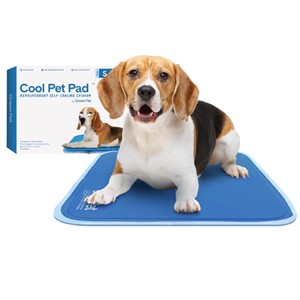
The Green Pet Shop Cooling Mat
Price At Time of Publish $40.00
MH MYLUNE HOME Self Cooling Mat
Price At Time of Publish $40.00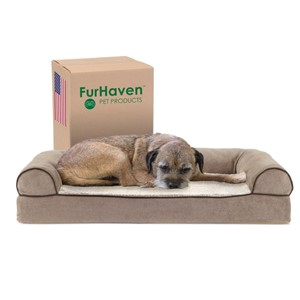
Furhaven Pet Products Cooling Gel Bolsters Small Bed
Price At Time of Publish $45.00

Furhaven Cooling Gel Medium Bed
Price At Time of Publish $42.00
ARF Pets Cooling Gel Pad
Price At Time of Publish $35.00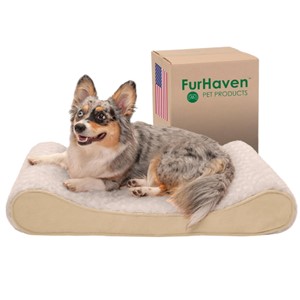
Furhaven Cooling Gel Small Bed
Price At Time of Publish $50.00 Price At Time of Publish $50.00Orthopedic Dog Beds

PetFusion Orthopedic Dod Bed
Price At Time of Publish $80.00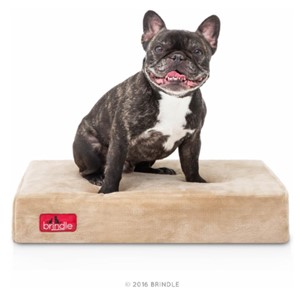
Brindle Orthopedic Bed Khaki
Price At Time of Publish $30.00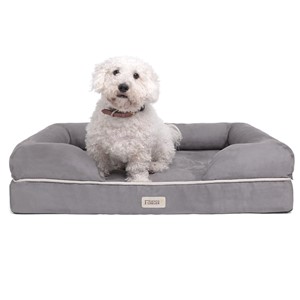
Friends Forever Orthopedic Bolster Bed
Price At Time of Publish $53.00

K9 Ballistics Tough Orthopedic Small Crate Bed
Price At Time of Publish $89.00
MidWest Homes Small Bolster Dog Bed
Price At Time of Publish $10.00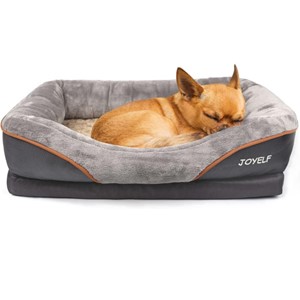
JOYELF Orthopedic Small Sofa Bed
Price At Time of Publish $40.00
Bolster Dog Beds

Furhaven Small-Medium Bolster Dog Bed
Price At Time of Publish $57.00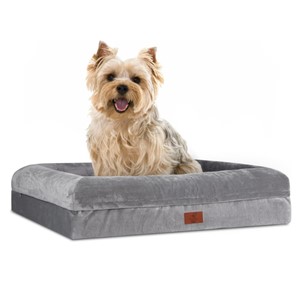
Yiruka Small Bolster Sofa Dog Bed
Price At Time of Publish $40.00
K&H Pet Products Bolster Crate Pad
Price At Time of Publish $22.00
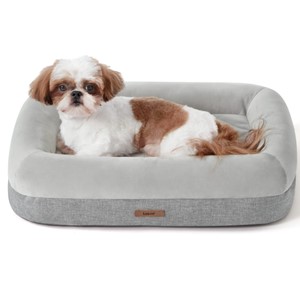
Leasure Small Bolster Dog Bed
Price At Time of Publish $40.00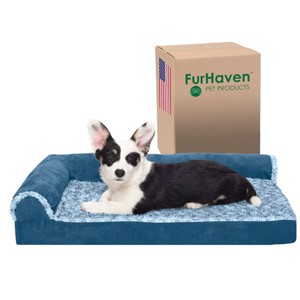
Furhaven Small-Medium L-Shaped Bed
Price At Time of Publish $39.00
Long Rich Bolster Small Bed
Price At Time of Publish $27.00
Elevated Dog Beds
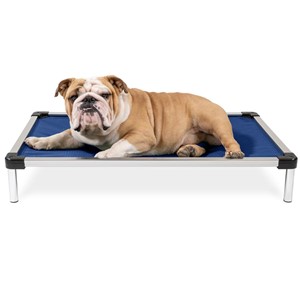
K9 Ballistics Chew Proof Elevated Small Bed
Price At Time of Publish $129.00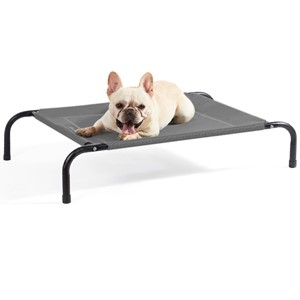
Bedsure Medium Elevated Dog Bed
Price At Time of Publish $33.00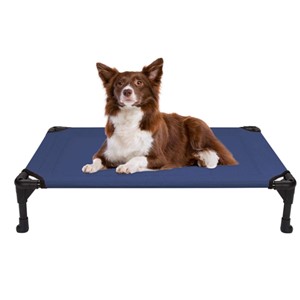
Veehoo Medium Elevated Dog Bed
Price At Time of Publish $45.00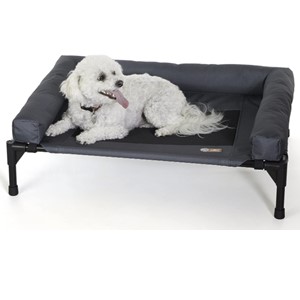
K&H Pet Products Elevated Bolster Dog Bed
Price At Time of Publish $57.00
Kuranda Elevated Chew Proof Small Dog Bed
Price At Time of Publish $134.00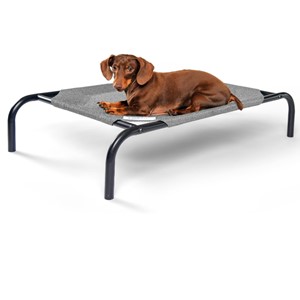
Coolaroo Small Elevated Dog Bed
Price At Time of Publish $21.00
Shop Cave/Donut Dog Beds

Snoozer Cozy Cave Bed
Price At Time of Publish $87.00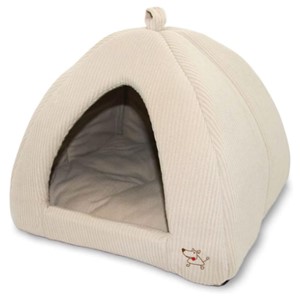
Best Pet Supplies Tent Bed
Price At Time of Publish $23.00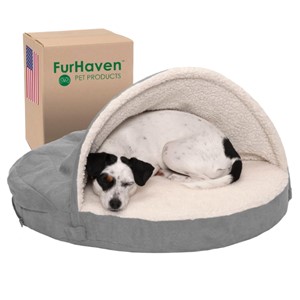
Furhaven Round Orthopedic Cave Bed
Price At Time of Publish $30.00
Best Friends by Sheri Original Calming Donut Bed
Price At Time of Publish $25.00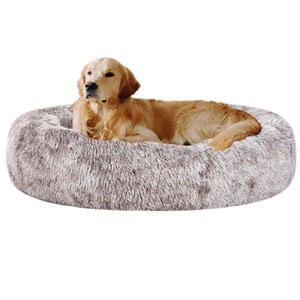
Coohom Oval Calming Donut Cuddler Bed
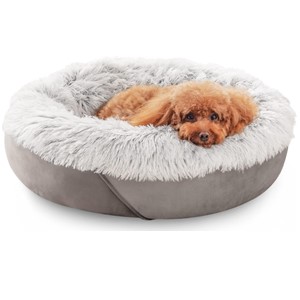
JOEJOY Calming Donut Small Dog Bed
Price At Time of Publish $33.00
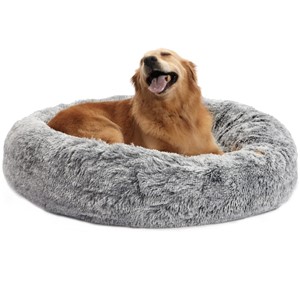
Bedfolks Calming Donut Dog Bed
Price At Time of Publish $66.00
Bedsure Medium Donut Dog Bed
Price At Time of Publish $36.00
Bedsure Medium Donut Dog Bed
Price At Time of Publish $40.00Related Articles
Below are some other articles that might interest you. Just select one that you want to learn more about.
- Best Dog Training Toys
- Best Healthy Dog Food Brands
- Dog Training Techniques
- Feeding Dogs Different Life Stages
- How To Train A Puppy
- Positive Reinforcement for Dog Training
- Puppy Proofing Your House
- Using Alexa for Dog Behaviors
Go back to the Dog Luxury Beds home page.
